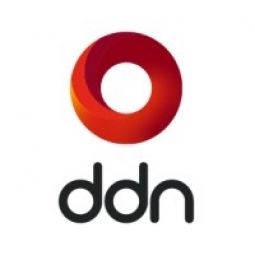Customer Company Size
Large Corporate
Region
- America
Country
- United States
Product
- DDN’s MEDIAScaler Converged Media Storage
Tech Stack
- Oracle Front Porch DIVArchive software management software
- DIAMOND asset system
- Grass Valley video server system
- Adobe Premier Pro
Implementation Scale
- Enterprise-wide Deployment
Impact Metrics
- Digital Expertise
- Productivity Improvements
Technology Category
- Application Infrastructure & Middleware - Data Exchange & Integration
- Platform as a Service (PaaS) - Data Management Platforms
Applicable Functions
- Discrete Manufacturing
- Product Research & Development
Use Cases
- Computer Vision
- Digital Twin
Services
- Data Science Services
- System Integration
About The Customer
MLB Network is Major League Baseball’s 24/7 TV network. It is the ultimate television destination for baseball fans, featuring the Emmy-winning “MLB Tonight,” live regular season and postseason telecasts, game highlights, and original programming, as well as insights and analysis from highly regarded commentators. When MLB Network first launched in a record-setting 50 million homes on January 1, 2009, it was heralded as the largest network debut in cable TV history. Since then, the network has steadily expanded its programming while earning awards and accolades for its unparalleled game and studio coverage. In 2015, the National Hockey League entered into a media rights partnership with MLB Advanced Media, and NHL Network’s operations were shifted to the same facilities as MLB Network in Secaucus, New Jersey.
The Challenge
MLB Network, a 24/7 TV network for baseball fans, was facing challenges in managing its vast baseball video archive. The network required a high-performance disk cache to support tape migration for the archive while accommodating 7,000 hours of new content ingested weekly. They also needed to simplify complex, concurrent workflows to ensure seamless support for up to 40 post-production jobs concurrently. The network was also looking for a technology that could suit the needs of two sports TV networks. The immediate challenge was moving LTO-4 content into a disk cache and then rewriting that content onto T10KD tapes, while simultaneously recording and archiving new footage onto the T10KD platform.
The Solution
MLB Network chose DDN’s MEDIAScaler Converged Media Storage as their solution. The MEDIAScaler storage solution includes the MEDIAScaler parallel file system. The solution delivered high performance and massive scalability in an all-in-one parallel file storage appliance. DDN’s industry-leading density was also a major plus as MLB Network faced serious space constraints in its data center. MEDIAScaler offers concurrent access to content while accelerating end-to-end digital content management in a single solution that can scale seamlessly up to hundreds of petabytes and millions of IOPS. The four 40-gigabit ethernet ports on each controller of the MEDIAScaler provided the flexibility to deploy storage in several configurations, ensuring faster access to content, while allowing more footage to stream from more tape drives simultaneously.
Operational Impact
Quantitative Benefit

Case Study missing?
Start adding your own!
Register with your work email and create a new case study profile for your business.
Related Case Studies.

Case Study
RobotStudio Case Study: Benteler Automobiltechnik
Benteler has a small pipe business area for which they produce fuel lines and coolant lines made of aluminum for Porsche and other car manufacturers. One of the problems in production was that when Benteler added new products, production had too much downtime.

Case Study
Electric/Hybrid Vehicle Propulsion System
Tecnalia is experienced in the automotive sector and in the development of controllers embedded in powertrain ECUs. Implementing three models that emulate the unavailable functioning and communications electronic control units (ECUs) for an electric/hybrid vehicle propulsion system.

Case Study
High Tech Case Study Dongyang E&P
To achieve global leadership, Dongyang E&P needed to improve collaboration between product development teams. The company already had a product lifecycle management (PLM) system in place, yet it needed a platform that would facilitate collaboration and improve problem detection before going to mass production.






